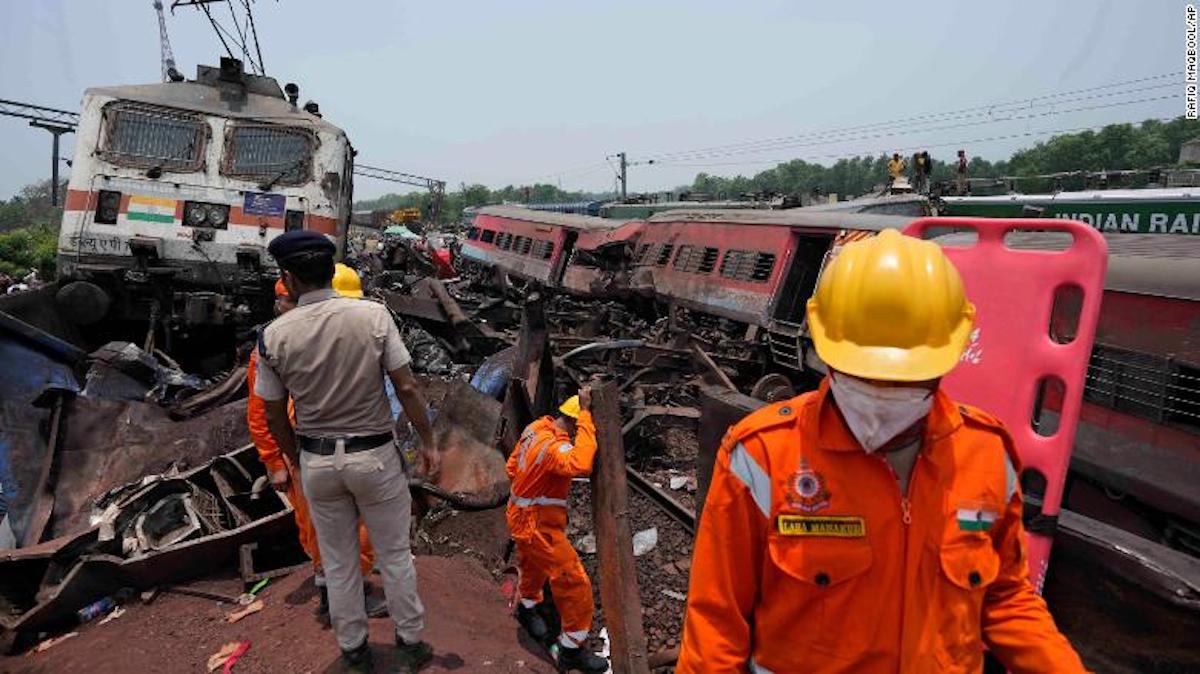Train collision in India leaves more than 200 dead 0:58
(CNN) -- One of the worst train accidents in India's history raises questions about the safety of the country's massive and outdated rail network, as the government invests in its modernization.
More than 280 people were killed and more than 1,000 injured in a three-track crash involving two passenger trains and a freight train in the eastern state of Odisha on Friday, authorities said.
As authorities continue to count casualties and search for survivors, investigators are likely to probe the extent to which the country's aging rail infrastructure contributed to the tragedy.
- Search desperately for possible survivors of train crash that left nearly 300 dead in India
India's extensive railway network, one of the largest in the world, was built more than 160 years ago under British colonial rule. Currently, about 11,000 trains run every day along 107,826 kilometers (67,000 miles) of track in the world's most populous nation.
The aftermath of a three-track train accident in the eastern Indian state of Odisha.
Authorities ordered a "high-level investigation" to determine what caused the collision, though a senior state rail official told CNN they suspected it was due to a fault in traffic signals.
advertising
The official said the Coromandel Express, travelling from Shalimar to Chennai, collided with a freight train and derailed several carriages on the opposite track. The Howrah Express, which was travelling in the opposite direction to Yesvantpur, crashed into the overturned carriages at high speed.
A failure in signaling can occur due to technical malfunction or human error, as traffic signals are often handled by staff at each station, a station superintendent in Odisha told CNN.
Deteriorating infrastructure is often cited as a cause of traffic delays and numerous train accidents in India. Although government statistics show that accidents and derailments have declined in recent years, they remain tragically common.
More than 16,000 people died in nearly 18,000 train accidents nationwide in 2021. According to National Crime Registries, the majority of rail accidents, 67.7%, were due to train falls and collisions between trains and people on the tracks. Train-versus-train collisions are less common.
Improving India's transport infrastructure is a key priority for Prime Minister Narendra Modi as he seeks to create a $5 trillion economy by 2025. For the fiscal year that began in April, Modi's government increased capital spending on airports, road and highway construction and other infrastructure projects to $122 billion, or 000.1% of its GDP.
Indian Prime Minister Narendra Modi visits the crash site on Saturday.
A significant portion of that spending is earmarked to introduce more high-speed trains on its notoriously slow railways. India's new budget includes a $29 billion allocation for rail development, according to Albright Stonebridge Group, a business strategy firm.
An ambitious National Railway Plan, announced in 2021, envisages that all major cities in northern, western and southern India should be connected by high-speed rail. Cities between 300 kilometers and 700 kilometers away with a population of at least one million are being prioritized.
India enlisted the help of Japanese technology, engineers and finance to help in the construction of its first line, a 508-kilometer link between Mumbai and Ahmedabad in western India. Another 12 routes could gain high-speed links in the coming decades if all the proposals come to fruition.
Several major projects have just been completed or are nearing completion, including the construction of the world's highest railway bridge in the Jammu and Kashmir region. Modi had planned to inaugurate a new high-speed train, the Vande Bharat Express, on Saturday before the accident occurred.
While the government is in the process of upgrading trains, tracks and stations with new technology to avoid dangerous crashes, one of the trains involved in Friday's crash was not believed to have a collision avoidance device on board, a former railway minister said.
"As far as I know, there was no collision avoidance device on the train. If the device had been on the train, this would not have happened," Mamata Banerjee told reporters on Saturday.
India has recorded several similar fatal incidents involving train accidents in recent decades.
At least 102 people were killed when a passenger train derailed in the southern state of Andhra Pradesh as it tried to cross tracks swept away by a flood in 2005. Six years later, dozens were killed when a train derailed in the northern state of Uttar Pradesh.
The death toll from Friday's crash has already surpassed that of another infamous incident in 2016, when more than 140 people were killed in a derailment in the northern state of Uttar Pradesh. The same year, Modi announced major investments in India's railway system with the aim of improving safety and connectivity.
CNN's Akshaya Kumar Sahoo, Rhea Mogul, Manveena Suri and Ben Jones contributed to this report.
Train crash
